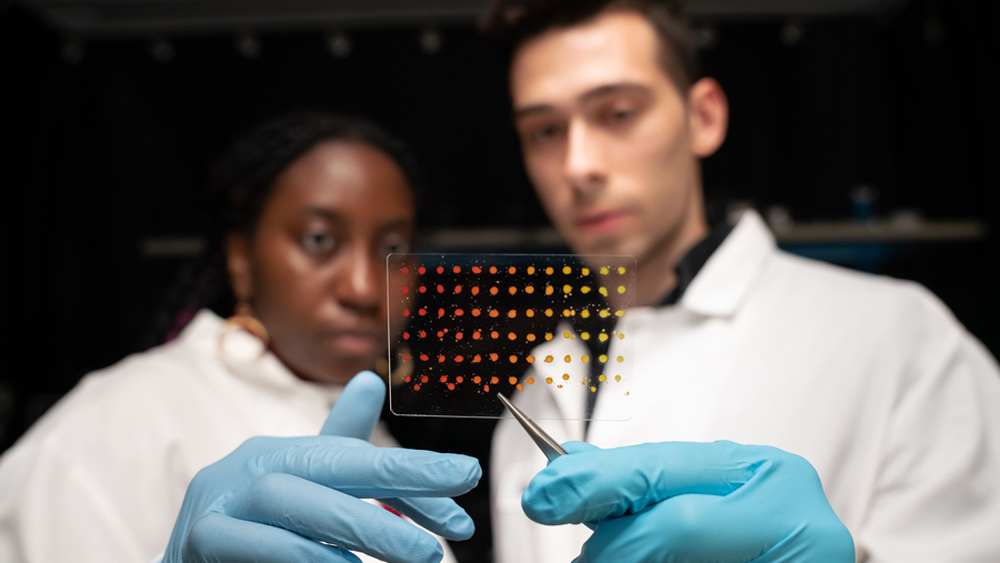MIT graduate students Eunice Aissi (left) and Alexander Siemenn have developed a technique that automatically analyzes visual features in printed samples (pictured) to quickly determine key properties of new and promising semiconducting materials. Photo: Bryce Vickmark
Boosting the performance of solar cells, transistors, LEDs, and batteries will require better electronic materials made from novel compositions that have yet to be discovered.
|
ADVERTISEMENT |
To speed up the search for advanced functional materials, scientists are using AI tools to identify promising materials from hundreds of millions of chemical formulations. In tandem, engineers are building machines that can print hundreds of material samples at a time based on chemical compositions tagged by AI search algorithms.
But to date, there’s been no similarly speedy way to confirm that these printed materials actually perform as expected. This last step of material characterization has been a major bottleneck in the pipeline of advanced materials screening.
Now, a new computer vision technique developed by MIT engineers significantly speeds up the characterization of newly synthesized electronic materials. The technique automatically analyzes images of printed semiconducting samples and quickly estimates two key electronic properties for each sample: band gap (a measure of electron activation energy) and stability (a measure of longevity).
…

Add new comment